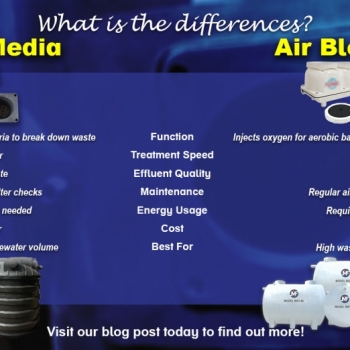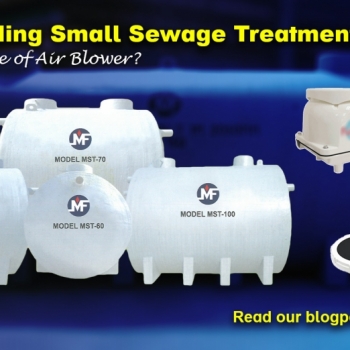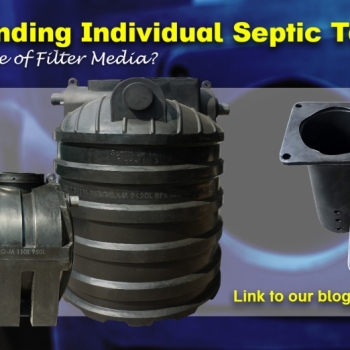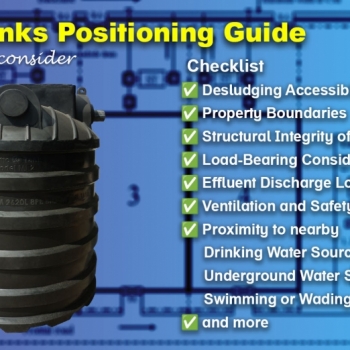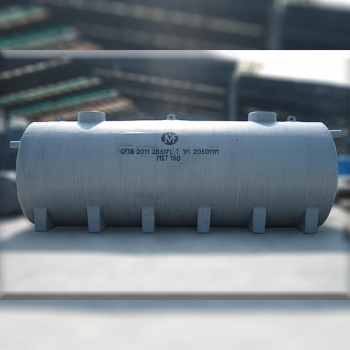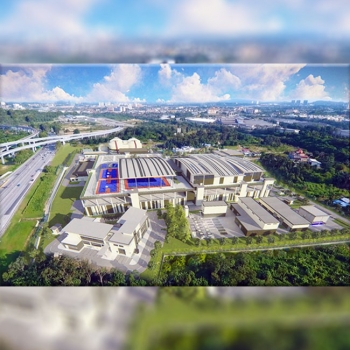Choosing between an individual septic tank with filter media and a mechanical septic tank with an air blower depends on efficiency, cost, and maintenance. This article breaks down their key differences to help you select the right wastewater treatment solution.
Understanding Population Equivalent (PE) for Septic Tanks: An End-User Guide
19 Dec 2024
Understanding Population Equivalent (PE) for Septic Tanks: An End-User Guide
- Key Takeaways
- What is Population Equivalent (PE)?
- How to Calculate PE Easily as an End-User in Malaysia
- Common Misinterpretation of PE and the Number of People
- PE or Liters? A Common Measurement for Septic Systems
- Consequences of Using the Wrong PE Septic System
- Expert Insights for Septic System Acquisition
- Why Mui Fatt is the Trusted Name in Septic Systems
- Ready to Find Your Ideal Septic System?
- Frequently Asked Questions (FAQs)
- What is PE in a septic system, and why is it important?
- How do I convert PE to liters?
- How do I determine the size of the septic tank for my application?
- Can PE calculations vary for different industries?
- What factors influence the PE calculation?
- What happens if I overestimate PE? Is it costlier to opt for a higher PE septic system?
- Are SPAN-approved septic tanks necessary?
- How do I ensure compliance when purchasing a septic system?
Key Takeaways
-
Population Equivalent (PE) is a crucial metric for designing septic systems by measuring wastewater output per person.
-
Accurate PE sizing ensures regulatory compliance and cost-efficient system performance.
-
An oversized or undersized septic system can lead to costly consequences like inefficiency, overflow, or premature system failure.
-
Mui Fatt offers various SPAN-approved polyethylene and FRP septic tanks tailored to different PE capacities.
Efficient wastewater treatment begins with understanding the fundamentals of Population Equivalent (PE). Whether for a home or commercial property, selecting the right septic tank size is critical for maintaining hygiene, safety, and long-term reliability. Let’s explore everything you need to know about PE and its role in septic system acquisition.
What is Population Equivalent (PE)?
Defining PE and its Role in Septic Systems
Population Equivalent (PE) refers to the estimated amount of wastewater generated by an individual per day, typically measured in liters. In Malaysia, 150–200 liters per person per day is the standard benchmark depending on water usage habits and regulations.
PE simplifies septic tank sizing by providing a universal measurement to accommodate household and commercial wastewater needs. It helps estimate the capacity needed for a septic system to handle wastewater from a given population or facility.
Why PE Matters for Septic System Sizing
Selecting a septic system without considering PE could lead to operational issues like overflow, untreated waste, or inefficiency. PE serves as a benchmark for designing systems that are cost-effective and regulatory-compliant, safeguarding both infrastructure and the environment.
A properly sized septic system:
-
System Efficiency: Ensures efficient wastewater treatment, prevents underperformance due to overload or underutilization.
-
Environmental Compliance: Helps maintain eco-friendly wastewater treatment, avoiding contamination, minimizes environmental pollution risks.
-
Cost Management: Reduces the likelihood of frequent maintenance and unexpected repair costs.
How to Calculate PE Easily as an End-User in Malaysia
Before determining the size of your septic system, it's essential to understand how PE is calculated and why it doesn't always correlate directly to headcount.
Residential Applications
Recommended Population Equivalent (PE): 5 PE per house
Example: 15 units of house
Total PE Calculation = 15 units x 5 PE per house = 75 PE
Suggestions:
-
Centralized Option for total 15 units houses = 80 PE FRP SSTS
-
Individual Option = 15 units of MF6 (Poly vertical 6 PE) or MFR2 (Poly horizontal 6 PE)
Commercial Applications
Recommended Population Equivalent (PE): 3 PE per 100m2 gross area
(Includes offices, shopping complex, entertainment/recreational center, restaurants, cafeteria, theatres)
Example: Single-story Shopping Complex, 1218m2
Total PE Calculation = 1218m2 x 1-storey x 3 PE per 100m2 = 36.5 PE or 37 PE
Suggestion: Mui Fatt 40 PE FRP SSTS
Petrol kiosk/Service Station Applications
Recommended Population Equivalent (PE): 15 PE per toilet
Example: Petrol Station consists of 01 Male Toilet, 01 Female Toilet, 01 Disabled Toilet
Total PE Calculation = 3 toilets x 15 PE per toilet = 45 PE
Suggestion: Mui Fatt 50 PE FRP SSTS
You may consult guidelines from regulatory bodies like SIRIM, SPAN, or MS 2441 Standards to align calculations with established benchmarks for accuracy. However, it's important to remember that PE is not simply a headcount—it represents wastewater output, which varies based on usage intensity. Let's address some common misunderstandings about PE next.
Common Misinterpretation of PE and the Number of People
While calculating PE is straightforward, misconceptions can arise if it is equated directly to the number of people using the facility. Let’s explore why PE isn’t strictly a "headcount" and what factors contribute to its variation.
-
Varied Wastewater Contributions:
Not every individual contributes the same amount of wastewater. Activities such as cooking, bathing, laundry, or industrial processes can increase wastewater beyond the baseline estimate. For instance:-
A single-family home might average 5 PE due to standard daily activities.
-
A small café with five workers could require 15 PE, considering frequent dishwashing and bathroom usage by customers.
-
-
Commercial and Industrial Facilities:
In larger buildings like malls, hospitals, or factories, PE is calculated based on usage intensity rather than the actual number of occupants. For example:-
A mall’s PE is derived from its gross area, not the foot traffic.
-
Hospitals use PE per bed, factoring in wastewater generated by medical processes and resident patients.
-
-
Adjusting for Peak Usage:
PE accounts for peak conditions rather than daily averages. A petrol station, for instance, may serve fewer customers at night but needs a septic system designed for the busiest times of the day.
Why Understanding the Difference Matters
Confusing PE with headcount often leads to two types of mistakes:
-
Underestimation: This could result in septic system overflow or contamination.
-
Overestimation: Leads to oversized systems, costing more without delivering benefits.
These mistakes not only affect functionality but also impact long-term project costs and compliance. For a deeper exploration of the consequences, refer to the later section: Consequences of Using the Wrong PE Septic Systems.
To ensure the correct calculations, always consult established PE guidelines to match wastewater output with the appropriate septic system capacity.
PE or Liters? A Common Measurement for Septic Systems
Is PE a Measurement Metric?
Yes, PE acts as a metric to estimate daily wastewater volume. Calculations like “1 PE = 150–200 liters/day” connect PE to liters, estimating the septic tank size easier.
When to Use PE vs. Liters?
When choosing a septic system, you might encounter Population Equivalent (PE) or liters as measurement units. Both represent the same thing—wastewater volume—but they serve different purposes depending on the situation.
|
Scenario |
Use PE |
Use Liters |
|---|---|---|
|
General Residential Estimates |
Easy for occupants or developers. |
When detailed usage is available. |
|
Institutional and Public Spaces |
Simple averages based on the population. |
For exact volume-based needs. |
|
Custom Commercial or Industrial |
Broad system requirements. |
Precise operations-based volume needs. |
|
Compliance with Guidelines |
PE-based regulations like MS 2441. |
If standards specify volumes in liters. |
Converting PE to Liters
You can easily switch between PE and liters:
-
From PE to Liters: Multiply PE by the average daily use (e.g., 150 liters/day).
Example: 5 people × 150 liters/day = 750 liters/day. -
From Liters to PE: Divide the total liters by the average daily use.
Example: 3,000 liters ÷ 150 liters/person = 20 PE.
Which Should You Use?
-
Use PE for quick estimates in homes or general projects.
-
Use Liters for precise data in commercial or industrial systems.
Consequences of Using the Wrong PE Septic System
Using a septic system that does not match your PE requirements can lead to significant issues.
Smaller PE System Than Required
An undersized septic system causes numerous issues:
-
Overflow: The system cannot handle the volume. The tank might fill up quickly, causing backups and foul odors.
-
Environmental Risks: Untreated wastewater contaminates nearby soil and water sources.
-
High Maintenance: Frequent emptying, increasing costs due to overloaded tanks.
Larger PE System Than Required
A system larger than necessary is equally problematic:
-
Higher Costs: Unnecessary expenses in installation and maintenance.
-
Inefficient Treatment: Stagnant wastewater may not undergo proper decomposition, and the organic load may be too low for proper breakdown. If the system does not receive adequate wastewater, the biological treatment process may fail, causing unpleasant odors and reduced effectiveness.
-
Potential Anaerobic Failure: Anaerobic bacteria play a crucial role in breaking down organic matter within the tank. However, insufficient organic load can slow down bacterial activity, resulting in incomplete treatment, unpleasant odors, and potential system failure.
Both scenarios underline the importance of accurate PE estimation to ensure optimal performance, cost-efficiency, and regulatory compliance. Selecting the right size is critical to avoid operational and environmental pitfalls.
Expert Insights for Septic System Acquisition
What Mui Fatt Recommends
-
Understand Your Needs: Calculate PE with certified professionals.
-
Consult a Trusted Manufacturer: Work with an experienced manufacturer who can guide you through the process, from PE calculation to system selection, IWK submission, and system installation.
-
Opt for SPAN-Approved Products: Regulatory compliance with Malaysian Standard (MS) MS 2441 standards ensures quality.
-
Tailored Solutions: Choose the right range:
-
Customizable solutions tailored to unique applications (specific PE needs), talk to us for professional advice
-
Invest in Durability: Polyethylene and fiberglass materials are engineered for durability and optimal performance.
Why Mui Fatt is the Trusted Name in Septic Systems
At Mui Fatt, we are committed to providing durable, efficient, and regulation-compliant septic solutions:
-
Compliance with MS 2441 Standards: All our systems meet the Malaysian Standards for design and performance.
-
SPAN and SIRIM Approval: Our products are certified for reliability and safety.
-
Customized Solutions: We offer septic systems designed for specific PE capacities, ensuring the perfect fit for your needs.
Ready to Find Your Ideal Septic System?
Choosing the right septic system starts with understanding your needs. It is vital for efficient wastewater management and cost-efficiency. Mui Fatt’s SPAN-approved septic tanks are tailored to every need, from households to commercial facilities.
Contact us today via WhatsApp or email at sales@muifatt.com.my or explore Mui Fatt’s septic tank solutions to find the perfect fit for your projects!
Frequently Asked Questions (FAQs)
What is PE in a septic system, and why is it important?
PE measures daily wastewater per person, typically 150–200 liters, to size systems effectively.
Importance of PE:
-
System Efficiency: Ensures the system operates optimally without overloading or underuse.
-
Environmental Compliance: Prevents overflow and pollution of nearby water sources.
-
Cost Management: Avoids unnecessary expenses caused by frequent maintenance or operational failures.
How do I convert PE to liters?
Multiply PE by 150 or 200 liters/day for your region’s benchmark.
How do I determine the size of the septic tank for my application?
You may calculate PE based on SPAN’s Malaysian Sewerage Industry Guidelines (MSIG) Jilid IV Sec. 1 - Introduction, Table 1.1: Recommended Population Equivalent (PE), pg. 6 & 7.
| Type of Premises/ Establishment | Population Equivalent (Recommended) |
|---|---|
| Residential | 5 per house |
| Commercial: Includes offices, shopping complex, entertainment/ recreational centres, restaurants, cafeterias, theatres |
3 per 100 m² gross area |
| Schools/ Educational Institutions - Day schools/ Institutions - Fully residential - Partial residential |
0.2 per student 1 per student 0.2 per non-residential student 1 per residential student |
| Hospitals | 4 per bed |
| Hotels with dining and laundry facilities | 4 per room |
| Factories, excluding process water | 0.3 per staff |
| Markets (wet type) | 3 per stall |
| Markets (dry type) | 1 per stall |
| Petrol kiosks/Service stations | 15 per toilet |
| Bus terminal | 4 per bus bay |
| Taxi terminal | 4 per taxi bay |
| Mosque/ Church/ Temple | 0.2 per person |
| Stadium | 0.2 per person |
| Swimming pool/ Sports complex | 0.5 per person |
| Public toilet | 15 per toilet |
| Airport | 0.2 per passenger 0.3 per employee |
| Laundry | 10 per machine |
| Prison | 1 per person |
| Golf course | 20 per hole |
(Ref: Malaysian Standard 1228)
Can PE calculations vary for different industries?
Yes, industries have different wastewater discharge rates, so PE calculations must consider these variations to ensure accuracy. For instance, hotels and schools application:
-
Hotels: Allocate higher PE due to intensive usage.
-
Schools: Require less PE as wastewater usage is intermittent.
What factors influence the PE calculation?
Several key factors impact PE calculation:
-
Type of Premises: Homes, commercial sites, or industries.
-
Usage Patterns: Frequency and intensity of wastewater usage, such as daily showering, kitchen use, or industrial processing.
-
Industry Standards: Regional standards like Malaysian Standards (e.g., MS 2441) set the benchmark for calculating PE.
-
Number of Occupants: The more people regularly using the facility, the higher the PE.
Accurate assessment of these factors is critical for designing an efficient septic system.
What happens if I overestimate PE? Is it costlier to opt for a higher PE septic system?
An oversized tank wastes money and may operate less efficiently:
-
Increased Material Use: Larger systems require more materials for construction.
-
Higher Installation Costs: Bigger systems often need more extensive preparation and setup.
-
Operating Inefficiencies: If the system is oversized, underutilization may lead to issues like stagnant wastewater, reducing treatment efficacy over time.
Are SPAN-approved septic tanks necessary?
Yes, SPAN approval ensures the septic system complies with regulatory standards in Malaysia, safeguarding your investment and the environment.
How do I ensure compliance when purchasing a septic system?
To ensure compliance when purchasing a septic system:
-
Refer to Regulatory Standards: Look for systems adhering to MS 2441 or other relevant Malaysian Standards.
-
Check for SPAN Approval: SPAN-certified systems meet stringent quality and environmental guidelines.
-
Engage Trusted Manufacturers: Opt for experienced manufacturers like Mui Fatt, who provide solutions tailored to local regulations.
-
Inspect Documentation: Ensure the system comes with proper certifications, SPAN approvals, usage guidelines, and warranties.
-
Consult Professionals: Expert recommendations can help you identify the best option based on PE and specific requirements.
Disclaimer:-
The content on this site is for general information and entertainment purposes and does not constitute legal counsel. We strive to keep our information as accurate as possible. However, we make no warranties about the completeness, accuracy, reliability, suitability, or availability with respect to the information contained on this page. You should rely on this information at your own risk. This website may include links to other third-party sites. These links are provided as a convenience to you as a reader, user, or browser only. We make no representation, warranty, or guarantee, nor do we endorse or take responsibility for any of the content of such sites.
Stay in touch with us if you’re interested in hearing from us promptly.
- Website - https://www.muifatt.com.my/home/
- Facebook - https://www.facebook.com/muifattmarketing
- Instagram - https://www.instagram.com/muifattmarketing/
- Google - https://goo.gl/maps/WxVY13gNcaRTS7Jp6
- Youtube - http://www.youtube.com/@MuiFattMarketing
- TikTok - https://www.tiktok.com/@muifattmarketing
- LinkedIn - https://www.linkedin.com/company/mui-fatt-marketing-sdn-bhd-
- Linktree - https://linktr.ee/muifattmarketing
- Shopee - https://www.shopee.com.my/muifattmarketing
- Lazada - https://www.lazada.com.my/shop/mui-fatt-marketing
Recent Blog
The Role of Air Blower in Mechanical Septic Tanks
Unlike traditional septic systems, mechanical septic tanks use air blowers to accelerate wastewater treatment. This article explores how air blowers enhance aeration, promote bacterial breakdown, and ensure a more effective sewage treatment system in Malaysia.
The Role of Filter Media in Individual Septic Tanks
Filter media plays a critical role in solid-liquid separation and biological treatment in individual septic tanks. This article explores the importance, types, and benefits of filter media in wastewater treatment, helping you make an informed decision when selecting a septic system in Malaysia.
Where Should You Place Your Septic Tank? Key Factors to Consider
Proper septic tank placement is crucial for efficient wastewater treatment. Learn why septic tanks should not be placed inside a house, how their location impacts wastewater disposal, and how to determine the best site for installation.
Simplified IWK Submission Process for Septic Tank Approvals in Malaysia
Navigating the IWK submission process can be challenging. Discover our simplified steps and professional advice for hassle-free septic tank approvals.
Understanding Biodegradable Septic Tanks: A Guide in Malaysia
This article explores biodegradable septic tanks, covering their materials, operations, costs, and maintenance. It also explains why they're rare in Malaysia and introduces alternative sustainable options.
Why Desludging Your Septic Tank Every 2 Years Matters
Regular septic tank desludging ensures efficiency, prevents costly repairs, and protects your environment. Learn the top 10 reasons why this process is critical every two years.
Individual Septic Tanks: A Viable Solution for Rapid Housing Growth in Langat
Discover why individual septic tanks are an ideal solution for new housing developments in areas underserved by the Langat Centralized Sewage Treatment Plant. Learn about their benefits, installation process, and environmental impact.



